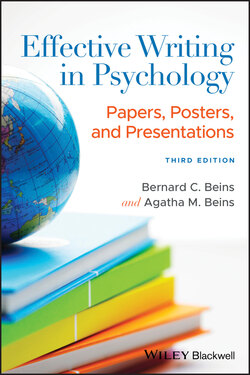Читать книгу Effective Writing in Psychology - Bernard C. Beins - Страница 21
Poster Presentations
ОглавлениеYet another medium of expression is visual. Increasingly, research conferences are relying on poster presentations for reporting research findings. In this form of communication, you present all your information in a small display that might be about 4 ft × 6 ft (i.e., 1.3 m × 2 m) in size. The dimensions vary from one conference to another, but the amount of space always seems to be smaller than you would want.
One of the worst things you can do is to fill the poster with text. Nobody wants to fight through a poster with endless strings of sentences. The viewer is typically interested in your main points. The use of tables, figures, bulleted points, and other eye‐catching features is a good idea in a poster. During such a presentation, the author of the poster is typically present, so if viewers want to know more details than are available on the poster, they can simply ask.
So, for a poster, you should present the main points with as little text as you can get away with. Visual elements are often a more meaningful way to make your points accessible. The result is often more information than in an oral presentation, but less than in a complete APA‐style research report. It helps that the researcher is present to clear up any misconceptions that arise because not all the information is available on the poster. Furthermore, if you are presenting a poster, you can create a handout that resembles an APA‐style manuscript. In this way, interested people can get the gist of your research and can ask you any questions that come to mind right away. Then they can take your written handout and attend later to the level of detail they desire.
